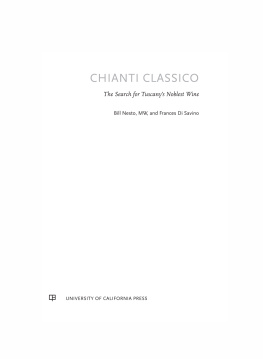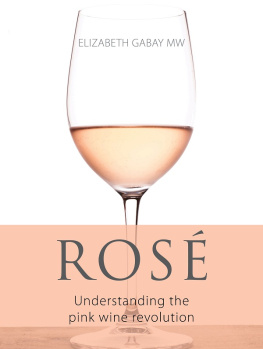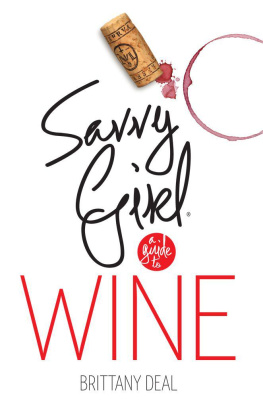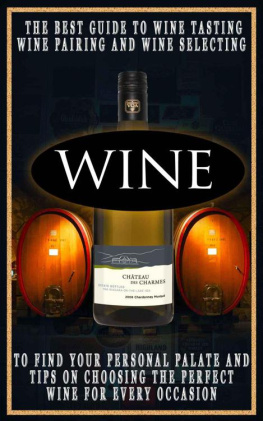
THE WORLD OF SICILIAN WINE

FRONTISPIECE.
Map of Sicily by Robert Morden and William Berry from 1680. Reproduced in LIsola A Tre Punte: Maps of Sicily from the La Gumina Collection (XVI-XIX Century) , edited by Enrico Iachello (Catania: La Gumina/Sanfilippo Editore, 1999), 151.
THE WORLD
OF SICILIAN WINE
Bill Nesto, MW, and Frances Di Savino

UNIVERSITY OF CALIFORNIA PRESS
BerkeleyLos AngelesLondon
The publisher gratefully acknowledges the generous support of the General Endowment Fund of the University of California Press Foundation.
University of California Press, one of the most distinguished university presses in the United States, enriches lives around the world by advancing scholarship in the humanities, social sciences, and natural sciences. Its activities are supported by the UC Press Foundation and by philanthropic contributions from individuals and institutions. For more information, visit www.ucpress.edu.
University of California Press
Berkeley and Los Angeles, California
University of California Press, Ltd.
London, England
2013 by William R. Nesto and Frances Di Savino
Library of Congress Cataloging-in-Publication Data
Nesto, Bill, 1951
The world of Sicilian wine / Bill Nesto and Frances Di Savino.
p. cm.
Includes bibliographical references and index.
ISBN 978-0-520-26618-6 (cloth : alk. paper)
eISBN 978-0-520-95507-3
1. Wine and wine makingItalySicily. 2. Wine and wine makingItalySicilyHistory. 3. Sicily (Italy) I. Di Savino, Frances, 1960 II. Title.
TP559.18N472013
663.2009458dc23
2012026490
Manufactured in the United States of America
22 21 20 19 18 17 16 15 14 13
10 9 8 7 6 5 4 3 2 1
The paper used in this publication meets the minimum requirements of ANSI/NISO Z 39.48-1992 (R 2002) ( Permanence of Paper ).
To our fathers and mothers,
R. William and Antoinette Nesto
&
Sabino and Geraldine Di Savino,
we dedicate this work,
our labor of love
Almost a year... a year in Sicily...
a year that coursed so quickly...
And what I now inscribe is but a trace,
a vestige of the visions shared when we
were wanderers in Sicily: for me,
you made each pilgrim path a joyous journey.
Ovid, Ex ponto 2.10 (My Eyes, translation by Allen Mandelbaum in Ovid in Sicily )
CONTENTS
MAPS
ACKNOWLEDGMENTS
We acknowledge and thank all of the Sicilians who have helped us in our research and travels. We are grateful to the Istituto Regionale Vini e Oli di Sicilia (IRVOS) and its director general, Dr. Dario Cartabellotta. The Region of Sicilys dedicated team of enologists, agronomists, and other experts working in the field from Marsala to Mount Etna provided us with valuable insights and information. We also express our appreciation to Blake Edgar, Dore Brown, and Kate Marshall of University of California Press and to our copy editor Juliana Froggatt for their wise guidance and professionalism. To our mothers, Anne Sirugo Nesto and Geri Saporito Di Savino, and our cherished family and friends, we shall forever be grateful for your love and encouragement. Finally, we acknowledge and express our profound respect for the countless Sicilianspast, present, and futurewho have tended their vines and sacrificed so very much for their magnificent land. It has been an honor to tell their story.
Grazii da nostri cori pri sempri.
PREFACE
Frances Di Savino, my wife, and I explored the island of Sicily for two weeks in June of 2008. I was there to research an article about Sicilian wine. Fran was with me because we do almost everything together, and we both love Italy. I say almost everything since the hand that writes this preface is my own. But she is at my side. This is our introduction to our book.
We were astounded by the enthusiasm of the Sicilians we met. Visits to vineyards and wineries and sips of wine inevitably began with, ended with, and were blended into visits to historical sites and breathtaking panoramas and tastes of the vibrant flavors of produce and cuisine. We came back to Boston knowing that there was a compelling story to tell, a book to be written, and many returns to Sicily in the near future.
The book was also in our genes. Fran and I are both 100 percent southern Italian by ancestry. I am 50 percent Sicilian. My ancestors on my mothers side came to New York from Ragusa. Frans ancestry comes from elsewhere down the boot. She feels Sicilian, though. We played with the possibility that her Saporito ancestors came to Campania by way of Sicily. In fact, Saporitos have thrived on the island since the thirteenth century.
Frans avid interest in Latin and Greek in high school led her to make her first pilgrimage to Italy with her schoolmates and her Latin teacher. She returned to Florence to study Medieval and Renaissance history and art. Of course, she became fluent in Italian. She speaks Italian so well that Italians ask her where she comes from in Italy.
After being a fine arts painter, I became interested in food and then wine and eventually became a sommelier, wine journalist, and Master of Wine. I gravitated to Italian wine because I felt more at home in Italy than in France, my other favorite wine destination. After my many visits, I speak Italian too. Though Italians understand me, they ask me where I come from in the United States.
Seeing our task in front of us, we made our plan. Fran took on the challenge of revealing the historical and cultural dimensions of Sicilian wine. She would write the first chapter to introduce readers to the history of Sicilian wine, set within the context of Sicilian culture through the mid-eighteenth century. As the wine expert, I would describe and analyze the Sicilian wine industry from the late eighteenth century to the present day. Hence, in the text, the I associated with tasting notes always refers to me. Furthermore, the opinions expressed about wine regions, wine producers, and their wines are mine and mine alone.
Woven throughout the book are three vignettes. We profiled three Sicilian winegrowers who through their work show their own love for Sicily. In their wines, we can taste and enjoy the genuine flavors of Sicily. I wrote the first two vignettes. Fran wrote the final one, set on Etna, and the afterword, finishing our journey as we had begun.
It has been a joyous journey.
Bill Nesto, MW
Whatever I shall have reported to you, I submit for you to correct or to adorn with the roses of your knowledge, so that like a vine cultivated and watered with the care of your knowledge, it may, yielding the most copious fruit, be rendered worthy of greater praise and gratitude. (Geoffrey Malaterra, The Deeds of Count Roger of Calabria and Sicily and of His Brother Duke Robert Guiscard , 44)
The monk Geoffrey Malaterra came as a foreigner to Catania at the end of the eleventh century. He was born north of the Alps and resettled in Sicily as part of the Norman conquest of Sicily ending in 1090. In a prefatory letter to The Deeds of Count Roger , Geoffrey appeals to the nobler instincts of his future readers and critics. We humbly do the same.
Bill Nesto, MW, and Frances Di Savino
THE ORIGINS OF SICILIAN WINE AND CULTURE
The culture of wine in Sicily is both ancient and modern. There is evidence of vine training and wine production from the earliest settlements of the Phoenicians on Sicily's west coast and the Greeks on Sicily's east coast from the eighth century B.C. In the long parade of foreign powers and people who have invaded and settled Sicily, it was the Greeks who brought an established culture of wine to this island. For the Greek settlers from mainland Greece and its islands, Sicily was the fertile and wild frontier on the western edge of their Mediterranean world. The gods and heroes of Greek mythology also ventured to Sicily. Upon sailing to Sicily, the protagonist-hero of Homer's Odyssey , Odysseus, together with his crew of men, approached the mighty Mount Etna and the untamed land of the Cyclops with more than a little trepidation. The Cyclops are the giant one-eyed creatures who in ancient mythology dwelled on Mount Etna (and who were reputed to eat wayward explorers). Homer gives us the following account of this forbidding race:
Next page

![Jon Bonné - The New French Wine [Two-Book Boxed Set]: Redefining the Worlds Greatest Wine Culture](/uploads/posts/book/443558/thumbs/jon-bonn-the-new-french-wine-two-book-boxed.jpg)













